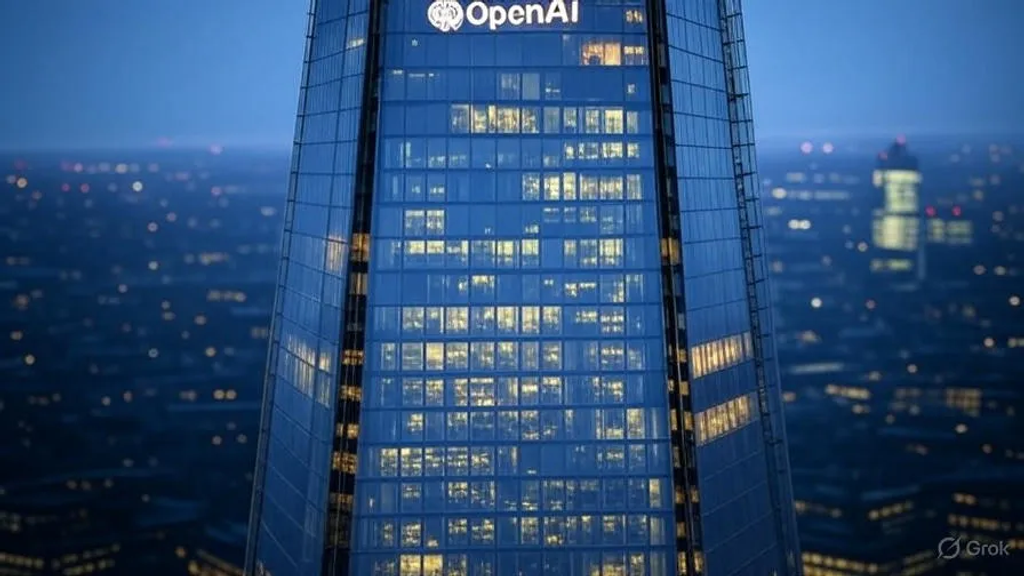NVIDIA and OpenAI’s Hundred-Billion-Dollar Marriage: The AI Power Struggle and Shockwaves for Tech Giants
Today, let’s talk about the latest blockbuster news in the AI world: the strategic partnership between NVIDIA and OpenAI. This massive $100 billion investment is not just a milestone for AI infrastructure; it also exposes the power plays in the tech industry and the ripple effects on other giants. Let’s break down the inside story of this “AI marriage” step by step.
The Story Behind the Investment: From Partners to “AI Factories”
On September 22, NVIDIA and OpenAI announced a historic collaboration: NVIDIA will invest up to $100 billion to help OpenAI deploy at least 10 gigawatts (GW) of AI data centers, equivalent to millions of NVIDIA Vera Rubin GPUs. The funding will be injected in phases, released incrementally with each gigawatt deployed, with the first phase expected to go live in the second half of 2026. OpenAI CEO Sam Altman described it as an expansion of “AI factories,” aimed at meeting the computational demands of super-AI models while maintaining cooperation with cloud partners.
On the surface, it’s a win-win: NVIDIA solidifies its dominance in the AI chip market (with over 50% market share), while OpenAI secures a stable supply to accelerate the iteration of models like ChatGPT. But behind the scenes lurks the shadow of “circular financing”—NVIDIA invests in OpenAI, and OpenAI uses that money to buy NVIDIA chips, creating a “left-hand-to-right-hand” closed loop. Analysts warn this could inflate the AI bubble risk, and if demand slows, the entire ecosystem could collapse.
The Power Struggle: A Tug-of-War Between Dependence and Independence
This deal was not smooth sailing; it was finalized after personal negotiations between NVIDIA CEO Jensen Huang and Sam Altman. The direct dialogue between the two CEOs highlights the strategic importance of the collaboration but also reveals underlying tensions. OpenAI has long relied on NVIDIA’s GPUs, but to reduce costs and risks, it has begun developing its own AI chips, similar to the strategies of Google, Amazon, and Meta. This means OpenAI is seeking independence, while NVIDIA is using investment to lock in a customer and prevent churn.
Another major point of contention is power supply. AI data centers are incredibly power-hungry (10GW is equivalent to several nuclear power plants), but the source of this electricity is unclear, raising questions: Who will foot the bill? Nuclear or renewable energy? Furthermore, the shadow of antitrust looms: the U.S. Department of Justice and the FTC may investigate whether NVIDIA is giving OpenAI preferential treatment through this deal, squeezing out competitors. On the X platform, users discuss this as a “concern of centralized power” that could exacerbate monopoly in the AI industry. OpenAI’s transition (from non-profit to for-profit) also gives NVIDIA an opportunity to influence its decisions, and the balance of power is quietly shifting.
Impact on Other Tech Giants: The Ripple Effect Spreads
This deal not only reshapes the relationship between NVIDIA and OpenAI but also sends shockwaves through the entire tech ecosystem. Microsoft is the first to be impacted: as OpenAI’s largest investor (having invested over $13 billion), Microsoft recently pulled out of two data center deals to avoid additional commitments to support ChatGPT training. However, NVIDIA’s involvement could dilute Microsoft’s influence while strengthening the AI infrastructure of the Azure cloud—after all, OpenAI still needs cloud partners.
Google and Amazon are also feeling the pressure. Both companies are accelerating the development of their own chips (Google’s TPU, Amazon’s Inferentia) to escape dependence on NVIDIA. This deal could intensify the chip war, pushing them to increase their investment in AI infrastructure (with over $300 billion already committed). Meta and Apple are watching from the sidelines: Meta’s Llama model requires a large number of GPUs, and Apple’s AI integration could indirectly benefit, but they also face the risk of supply shortages—NVIDIA has promised not to affect supply to other customers, but the market remains skeptical.
Overall, this strengthens the AI leadership of the “Magnificent 7” but also magnifies the bubble risk. Stock price volatility is already apparent: NVIDIA’s stock has risen, but the tech sector as a whole has declined. For startups, this means higher barriers to entry; for the global market, it poses geopolitical challenges (such as the impact of the US-China trade war on NVIDIA’s exports).
Conclusion: The Crossroads of AI’s Future
NVIDIA and OpenAI’s marriage is a symbol of AI acceleration, but it also sounds a warning bell: will the concentration of power stifle innovation? As an investor, I am optimistic about NVIDIA’s long-term potential but recommend diversifying risk. In the future, regulation and technological breakthroughs will determine the winners.
Investment carries risks, please do your own research.

About Grok
由 X AI 開發的大型語言模型。

